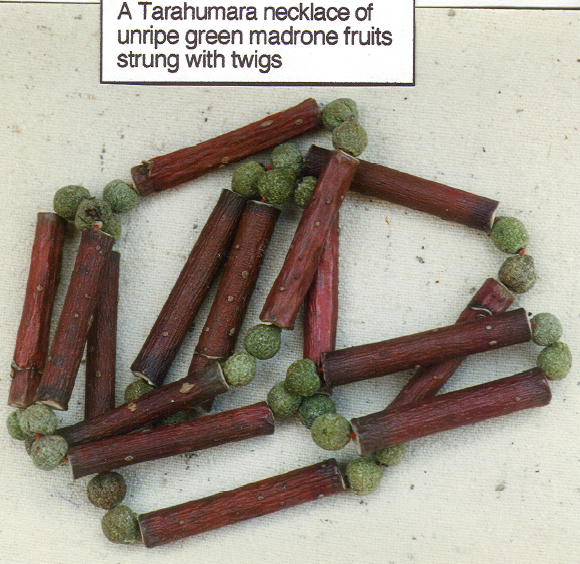
Arbutus spp. Ð Madrone Ð Ericaceae
In recent years Tarahumara women have been making necklaces for the tourist trade. There is little historical or archaeological evidence that the Tarahumara of Mexico wore jewelry. Caches of coral beans, Erythrina sp., from sites dating from 300 B.C. to 700 A.D. are believed to be funeral offerings. Those of madrone seeds, Arbutus xalapensis, may have been food offerings.1
The Spanish introduced the grass, Job's tears, Coix lacryma-jobi, which soon became popular for making rosaries and necklaces. It is the caryopsis, the specialized fruit of the plant, often called a seed, that is used as a bead. The Tarahumara believed it had medicinal power and wore it to protect against illness.2
The madrone, Arbutus sp., is a medium-sized tree that grows in southeast New Mexico and southwest Arizona on dry, gravelly terraces and mountains. The Spaniards who first explored this area named it "madroña" because of its similarity to a Mediterranean tree they knew as the madroño. It's been nicknamed the "refrigerator tree" because a hand or face pressed against its bark feels a surprisingly cool sensation. The fruits are red, pea-sized, warty berries that can be eaten fresh or dried.
Seeds found in the vicinity of Copper Canyon in the state of Chihuahua are represented in the necklaces shown here purchased in 1996.
 |
BACK |
TOP |
FWD |